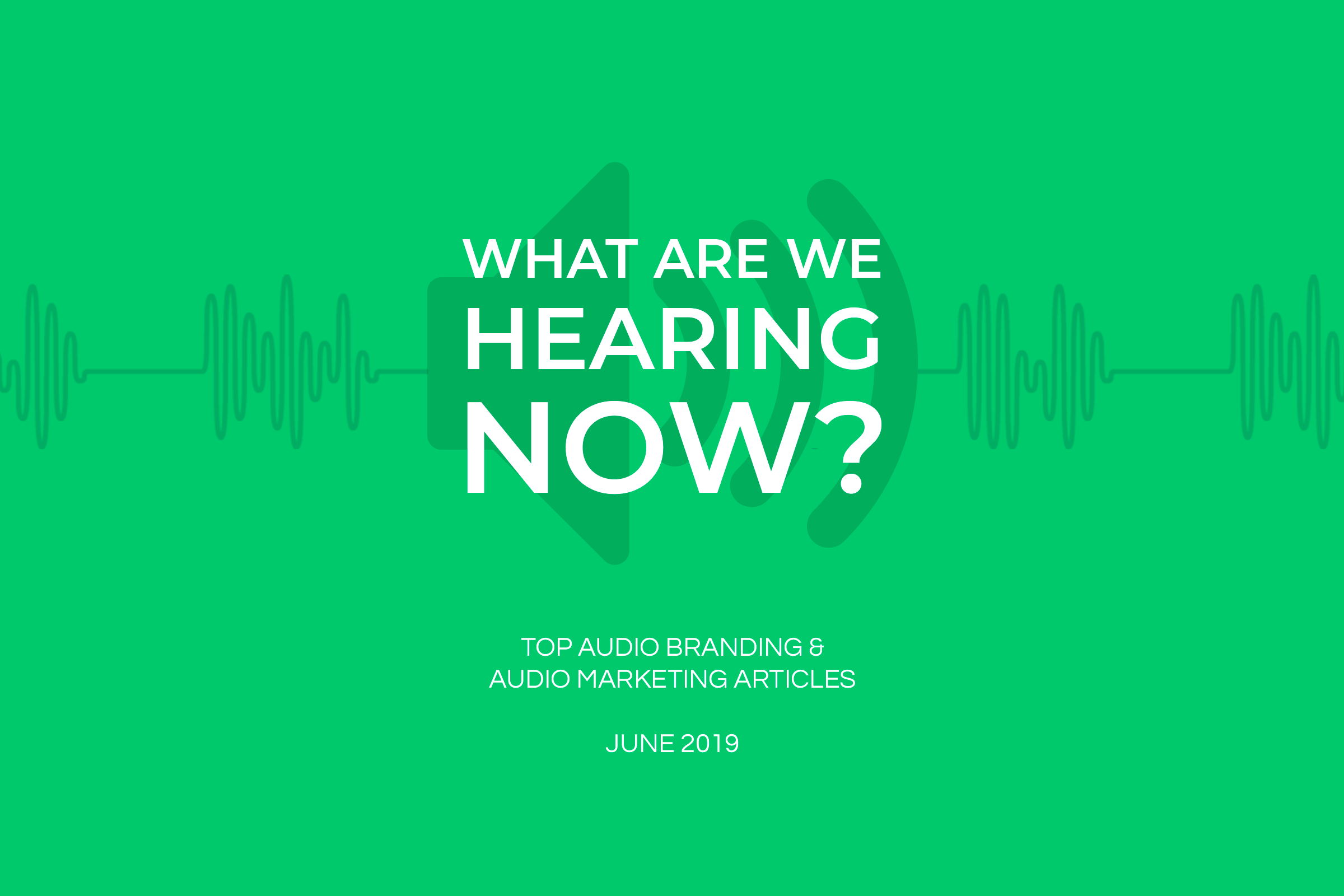What Are We Hearing Now? June 2019
“Sound can express the brand belief and values in an emotionally direct way. Sound speaks to our deepest emotional instincts and bypasses our rational brain.”
These wise words are from Thomas Marzano, global head of brand experience at Philips who was interviewed in a recent Forbes article about how big companies are engaging in audio branding. Philips is yet another world-renown enterprise to join the likes of Mastercard, who have recently embarked on a quest to investigate the sonic side of their brand personas. What else have these household names figured out about audio branding that makes it worth all the investments?
Audio unifies the multisensory brand experience
Modern brand experiences are turning all the more multisensory. As far as audience engagement goes, simply seeing a company logo or reading a call-to-action on social media ads no longer strike the chord.
According to the brand consultant Archie Heaton, brands and consumers coexist in an experience economy, where all our senses are now equally important factors in the user experience. Companies need audio identities to round up their multisensory communications into coherent brand personas to get recognized, or indeed to exist, in the upcoming smart speaker and voice assistant era.
More personalized content measured more easily
Attesting to the importance of these audio-centric marketing platforms is the concept of dialogue advertising. Voice-commanded ads are providing ever more detailed campaign metrics to marketers and a smoother flow of information to their audiences. For instance, compared to traditional radio ads, which the listeners have to wait out and endure, these technologies allow users to skip the content if they wish to.
This kind of data is especially useful when it comes to offering more personalized and relevant content for your target audiences. When AI is added to the mix, these commercials can interpret and even anticipate the intent of the user’s responses. It very much seems like voice-enabled advertising is about to revolutionize the way brands and consumers interact with each other.
To license or not to license?
Along with voice, the use of music content defines a brand’s audio identity. Since the days of radio jingles, companies have opted to use licensed music as a means of appealing to their audience’s emotions. This article from AdAge points out a number of useful tactics for using licensed music in marketing.
However, licensed music can only go so far in building brand equity in the long run: The bigger the name of the musician you are licensing from, the bigger the risk of being overshadowed by their fame. Basing a brand’s musical identity on a celebrity is great for short term gain, but offers nothing broader than that. As a single strategy, you can build around it, but it should not be the only arrow in your quiver when aiming for success.
Instead, laying the foundations of your audio identity on custom music is a safer choice in the long run. It offers a chance to improve the durability of your audio assets and tailor them to fit every circumstance and touchpoint without losing brand equity to collaborating artists and influencers.
A world of opportunities to incorporate music into marketing
Need some inspiration on how to actually use music in your marketing? Look no further than below, because we’re concluding this month’s What Are We Hearing Now with some fresh and exciting music strategies.
A company from the U.S. called Full Body Sound have gone pretty much all in when it comes to using music as a life-enhancement utility. Their product is based on a vibrational technology, which allows users quite literally feel the beat.
If that example had too much of a futuristic, sci-fi flare to it, what about this clever campaign from Coca-Cola, which uses product imagery to remind us what the opening of a Coke bottle sounds like. Pretty imaginative!
Few product sounds, like Harley Davidson motorbikes’ iconic engine roar, have become something of pop culture tokens over time. Now though, Kentucky Fried Chicken seems to have gone even further in leaving a trace of their sounds into pop culture history. KFC France just released a self-curated Spotify playlist featuring tracks which lyrics mention their company name. A brand-curated playlist is, indeed, a great way to tap into the emotions that music can create in people.
As you can see, music offers a world of opportunities for spicing up your marketing efforts. Whatever tactics you choose, make sure your musical choices are based on facts and understanding of how your brand persona translates to sound. As Eric Sheinkop, the author of the book “Return of the Hustle: The Art of Marketing With Music,” said in the aforementioned AdAge article:






